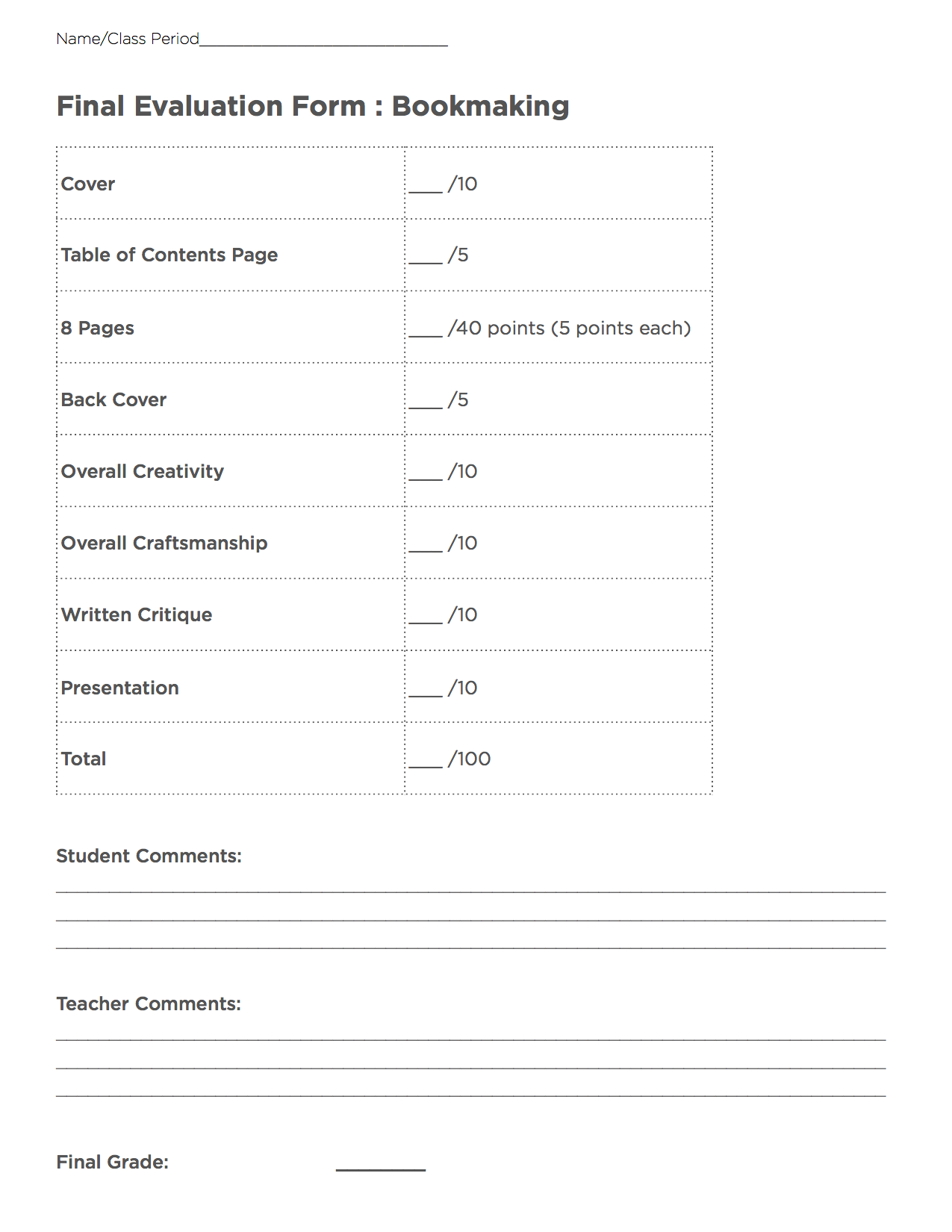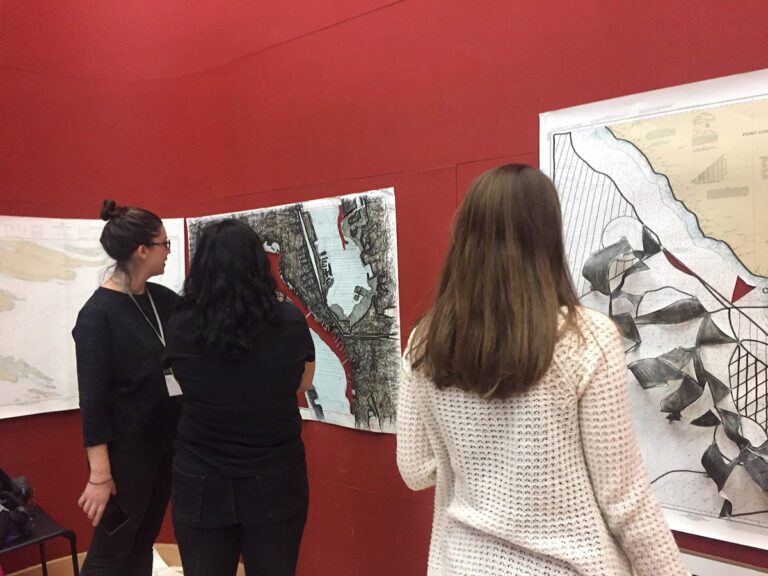Each year as I wrap up a semester’s worth of learning in my high school introductory art course, I am always amazed to see how much my students have grown individually. I can see that they are proud of their hard work and growth and that they learned…A LOT! I finally figured out a lesson that could prove this learning beyond a standardized exam.
I call it the Summative Assessment Bookmaking final.
This bookmaking lesson is a culmination of the lessons learned throughout the semester. It’s a wonderful form of authentic assessment. My students have three weeks to work on these books, and I have to say, the results are nothing short of phenomenal.
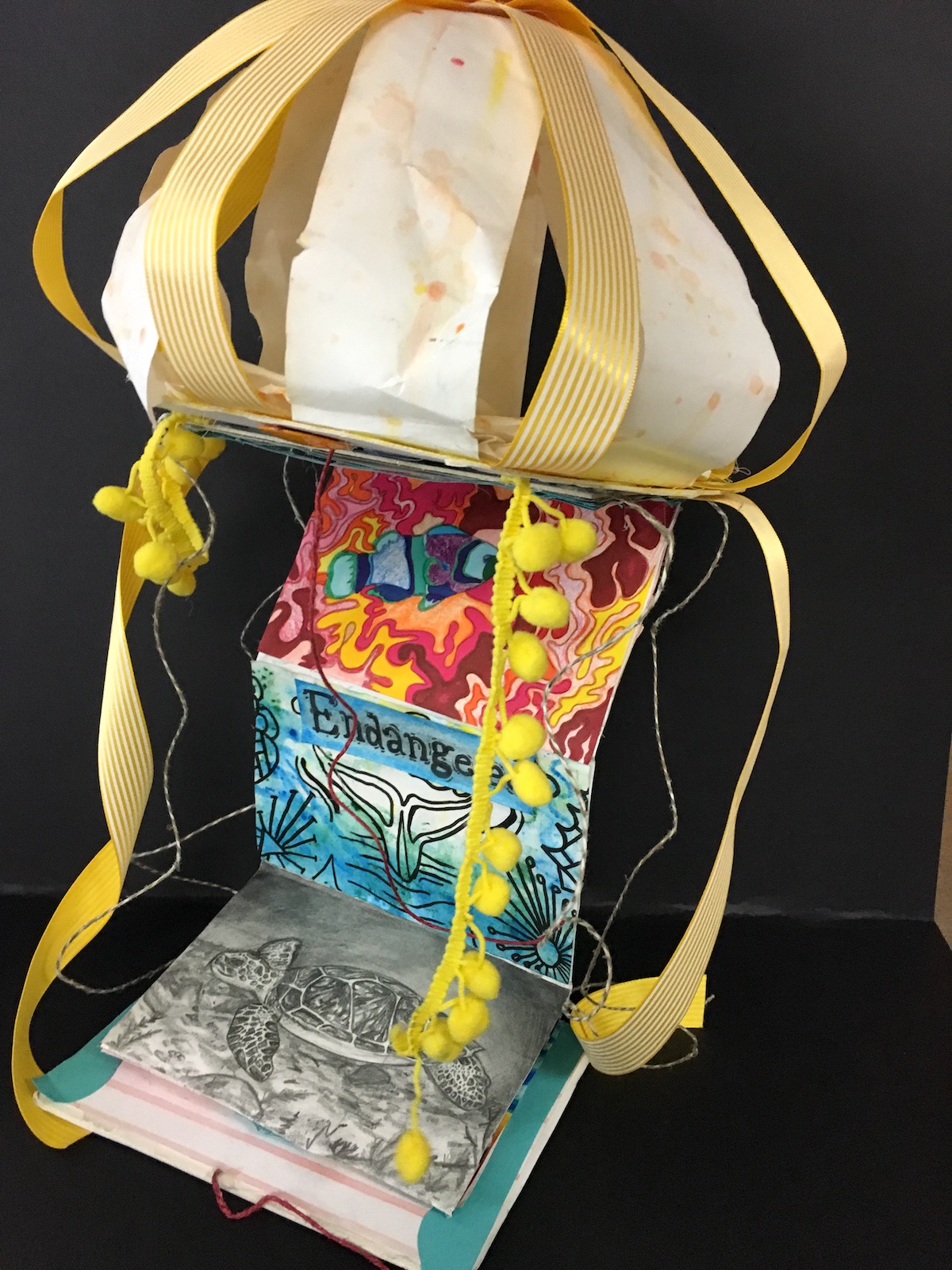
Here’s how to incorporate a summative bookmaking final into your art curriculum.
1. Create a list of lessons learned throughout the grading period.
Begin by having your students make a list of each of the lessons learned throughout the semester or grading period. The list should include major projects and also shorter skill-building activities such as value scales, perspective studies, or journal assignments. In my room, this list generally consists of 12-14 lessons and looks something like this:
- Name Design
- Visualizing Vocabulary
- Contour Studies
- Elements of Art Study Guide
- Creative Color Wheels
- Value Scale Work
- Grid Art
- Perspective Unit
- Pattern Designs
- Mid-Term Triptychs
- Art History Learning Spheres
- Printmaking Unit
- Painting 101 Unit
- Weekly Visual Journal Work
This brainstorming session is a wonderful way to discuss and reflect on their learning. Not only is this an opportunity for students to discuss how they came to the art room scared, challenged, intimidated, nervous, and excited, but it’s also an opportunity for students to acknowledge how they were eager to learn and improve their craft! This moment of taking stock is an opportunity for me to note where each student is coming from, and in turn, it serves as an opportunity for determining individual assessment expectations.
2. Have students choose eight lessons that they will incorporate into their book.
These might consist of their favorite lessons, their most successful lessons, or perhaps a lesson or two that really challenged them that they would like to rework. Once they have their top eight chosen, explain they will be re-creating the techniques learned from these lessons in miniature (4” x 6” rectangles) and using these small works as pages of their own accordion-style book.
This is a nice time for you to introduce the rubric you’ll be using so students know what to expect. You can see the rubric I use with my students below.
Feel free to download it and use it with your students, or use it as inspiration to create your own!
3. Have each student choose a theme for their book.
Choosing a theme for the book helps students focus and forces them to think creatively. In addition, it gives them full ownership over their learning and generates excitement! Choosing the right theme can really make or break student engagement.
For example, a student might choose “The Beach” as a theme. They may choose to create a color wheel beach ball, a collection of shells in contour line, or a print featuring coral. Students decide how to creatively show what they have learned and retained throughout the semester!
4. Create the book pages.
Now, it’s time to make some art! Each student receives eight, 4”x 6” pieces of white drawing paper. They begin to recreate the lessons onto these miniature pages. Each page takes approximately one class period to complete. Make sure students have a safe space to keep their growing collection of miniatures. In addition, have students plan out whether they want their pieces to be horizontal or vertical. Generally, choosing a single orientation works best.
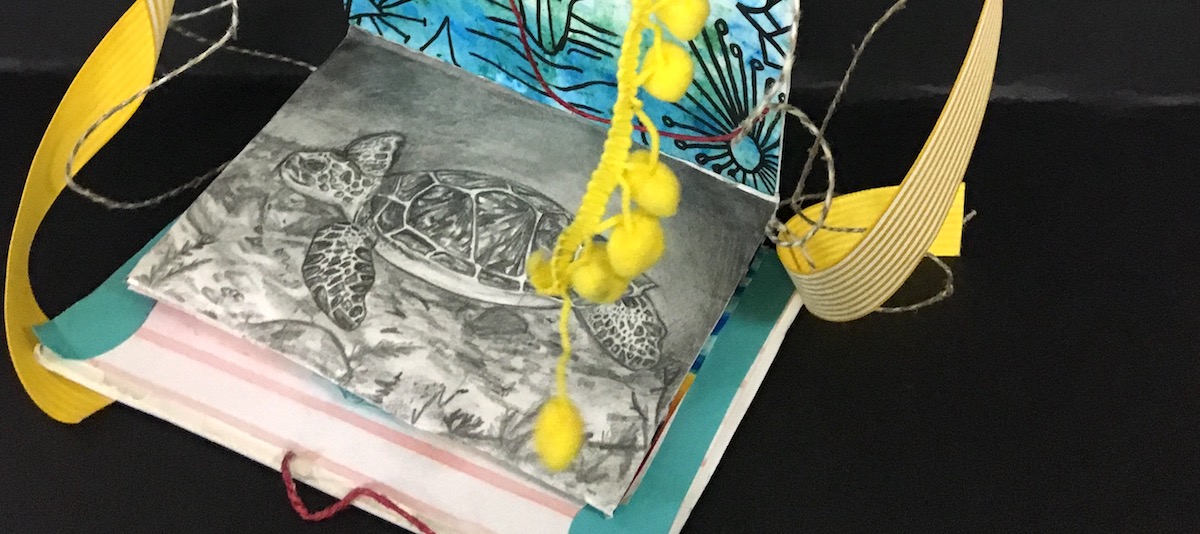
5. Create the book form.
After students have been working for about a week, it’s time to introduce them to the actual bookmaking process.
Here’s what to do:
- Fold a piece of 6”x 24” white paper back and forth so you end up with 12 rectangles that are 4”x 6.” There will be six on one side and six on the other. These are the spaces where the mini artworks will go.
- Cut two, 5″x 7″ pieces of mat board for the front and back cover. Alternately, you can use cardboard, tagboard, or any other sturdy paper.
- Glue the 6″x 24″ accordion-folded paper to the two pieces of mat board, like a sandwich.
Your students will have a front, back, and inside “skeleton” for their books.
6. Design and assemble the book.
Have students carefully consider how they will design the cover of the book, the back of the book, and where they will place their eight mini lessons into the book. I require students to add a table of contents on the front inside of the cover page. Planning is essential to the overall success of the final product. To wrap everything up, my students write a Feldman Critique on one of their works. This is added to the back inside cover.
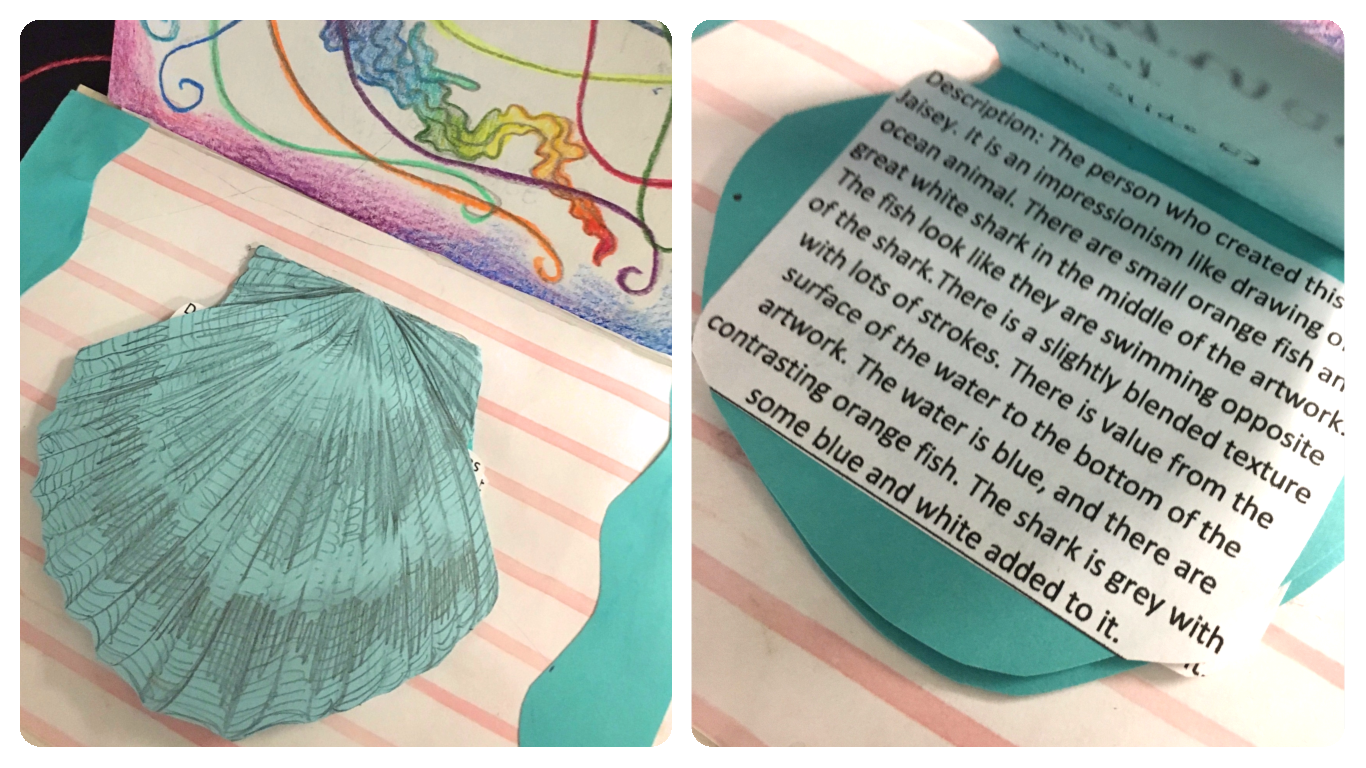
There are so many positives to this type of assessment. First and foremost, students realize just how much they have learned throughout the semester. Beyond that, they are happy to show what they’ve learned because they are engaged with the themes of their choosing. Students are able to reflect during both the artmaking process and the critique and rubric portions of the assignment.
A few days before our finals, students present their books and turn them in with their self-assessment rubrics. It is truly wonderful to see how successful each of these books turn out. They are made with love and care and are a true testament to what real portfolio-based assessments should look like!
If you’d like to learn even more about creating authentic assessments for your students, be sure to check out my presentation at the Summer 2017 Art Ed Now Conference! Impress your administrators with your ability to keep every student fully engaged in the assessment of their own work!
How do you authentically assess a semester’s worth of learning?
Does your current method work to assess every student’s growth?
Magazine articles and podcasts are opinions of professional education contributors and do not necessarily represent the position of the Art of Education University (AOEU) or its academic offerings. Contributors use terms in the way they are most often talked about in the scope of their educational experiences.

